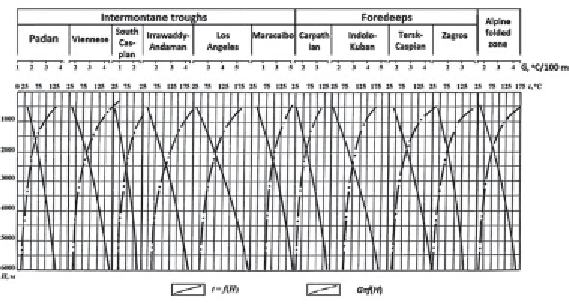Geology Reference
In-Depth Information
be important for establishing the type, form and spatial migration of fluids,
for the formation, placement and preservation of hydrocarbon accumula-
tions, for the forecast of their phase state, the determination of hydrogeo-
logical background, hydrodynamic and thermobaric environment within
structural traps.
We undertook a statistical analysis and systematization of large volumes
of data. The database of this study includes over 10
,
000 interval and point
temperature measurements in long-shut-in wells of 227 fields and pros-
pects and materials on the geology and hydrogeology of local structures.
These data have been partially borrowed from referenced publications,
conidential iles, ield data and topics and articles by numerous writers
listed in the References.
4.1
Geotemperature Regime of the Sediment Cover
Figure 4.1 displays the data characterizing the geothermal environment in
the reviewed regions. It shows that
the
t
=
f(H)
correlation is always non-
linear and is similar to a parabolic binomial. Analytical form of the curves
is
t
bН
n
, where
t
is temperature (°С) at depth
H
(m);
а
is the annual
average temperature on the surface;
b
,
n
are factors controlling the shape
of the curves in the individual areas as affected by the specifics of their
geologic evolution, tectonics, lithology and other factors.
=
а
+
Figure 4.1
Temperature and geothermal gradients vs. depth in basins of the Alpine
Mobile Belts.

